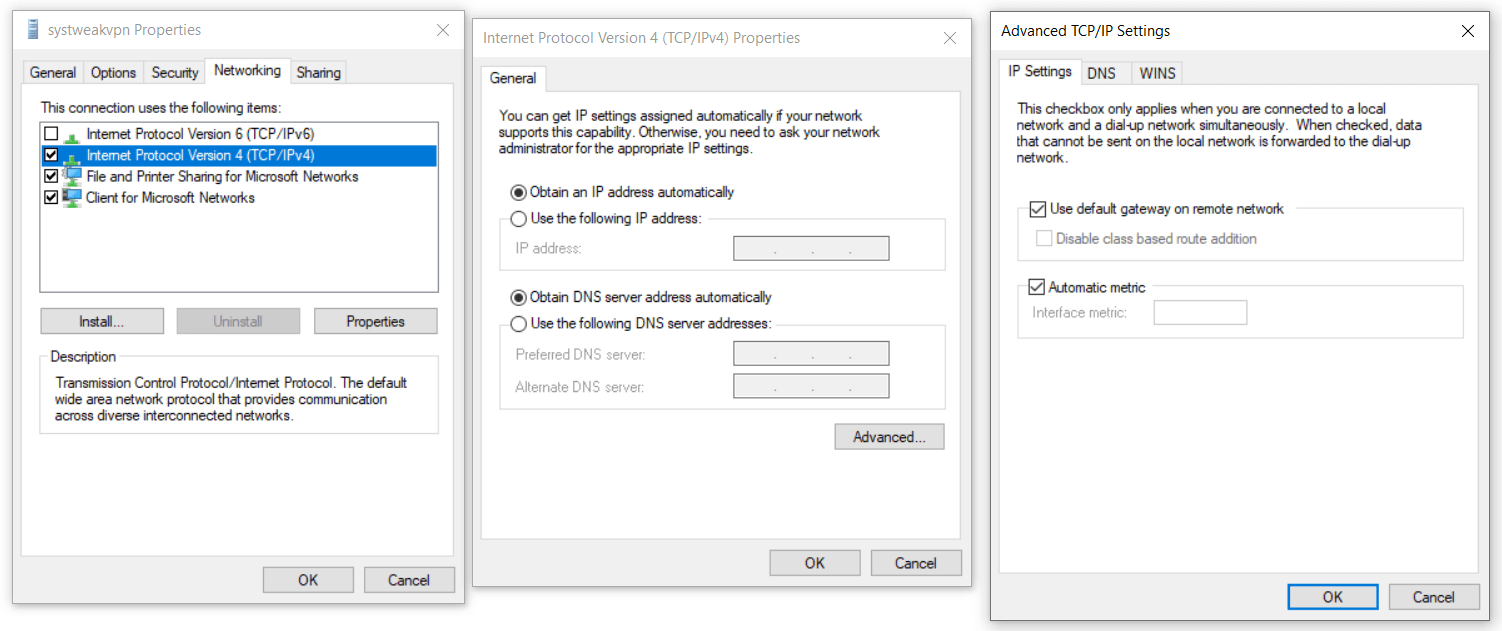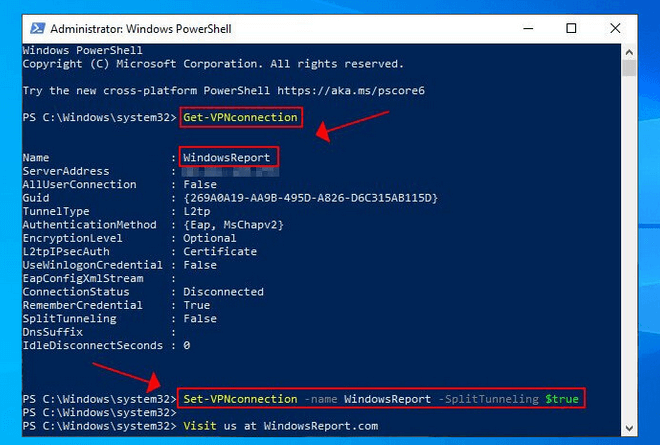VPNs are a popular medium to protect online privacy. VPNs utilize different protocols to safeguard the user data from various cyber-threats. (Read: 6 most common Types of VPN Protocols Explained) Different VPN Protocols use different techniques. No matter which protocol they use, VPNs employ two basic techniques, one encrypting and second tunneling. Let’s move forward and understand the meaning of VPN Tunneling, Split Tunneling, and How to enable it.
Index:
Methods to Enable Split Tunneling in Windows 10
What is VPN Tunneling?
VPNs create tunnels between the source and destination through which the data is transferred. These tunnels bifurcate the data sent by the VPN user from rest of the Data on the World Wide Web. Because the data is transferred through tunnels, it passes unnoticed by the hackers and is transmitted safely.
However, VPN tunnels can have a few disadvantages if you want to call them. Because the VPNs employ different techniques to first encrypt the data and then send the data through the tunnel, the Internet surfing speed takes a hit. The stronger the encryption and the VPN Tunnel, the more the Internet speed is affected.
What is Split Tunneling?
VPNs are made to protect our data from the online threats. But to put it simply, not all data is useful for the hackers. A person surfing Netflix wouldn’t interest the hacker, a person playing online games wouldn’t interest a hacker either. The transactions which are of monetary importance are generally being tracked by hackers and intruders and hence, these are the only activities that need to be protected.
Split Tunneling is designed to take advantage of the strong encryption and privacy of VPN Tunnels while still being able to surf the content at high speed. In split tunneling, the unimportant data is not encrypted and transmitted through VPN Tunnels and rather transmitted normally. Meanwhile the important data gets encrypted and transmitted through the secure VPN Tunnels to maintain privacy and security. Hence, the word ‘Split Tunneling’.
Split Tunneling can be useful for the people who use their system for various sensitive purposes like accessing official files, bank payments and Government websites etc. while still binge watching their favorite Netflix series or YouTube videos. In this case, the user can employ split tunneling to encrypt and protect the important data with VPN Tunneling and bypass the unimportant data through normal route. It helps maintain the balance between enjoyment and work.
How to Enable Split Tunneling in Windows 10?
There are two different methods to enable Split Tunneling in Windows 10. One is by changing the Network Properties and another one requires you to use Windows PowerShell. Let’s take a step by step look at both these methods:
1. Changing VPN Connection Properties:
This method is kind of a hack where you remotely connect to another PC with VPN. With this you can access the files with a VPN connection through the remote connection with another PC while still being able to surf the Internet without VPN through your Home Network.

Step 1: Go to Network Connection: User can access Network Connection by Right Clicking on the Start Button that will present a list with ‘Network Connections’ in it.
Step 2: Click on ‘Change Adapter Settings’
Step 3: Right-Click on the VPN connection that you want to enable Split Tunneling on and open ‘Properties’.
Step 4: In the ‘Networking’ tab, click ‘Internet Protocol Version 4 (TCP/IPV4)
Step 5: Click Advanced and enable the option ‘Use Default Gateway on Remote Network’.
Step 6: Restart your VPN Connection.
2. Using PowerShell:

Step 1: Right-Click on the Start Button and select Windows PowerShell (Admin).
Step 2: If you are not aware of the name of your VPN connection, use ‘Get-VPNconnection’.
Step 3: After this, enable VPN Split Tunneling by entering the command:

Step 4: To disable VPN Tunneling:

This method is the same as the first method, just the other way. Instead of using VPN Properties to enable Split Tunneling, we have used Windows PowerShell.
Split Tunneling can be a useful tool for all kinds of people who want to enable YouTube at their workplace but want to work on the normal network i.e. without a VPN connection. Split Tunneling has many uses.
There is a third method as well that is way more user-friendly than the above mentioned two methods that is using a VPN that comes with the functionality of Split-Tunneling enabled. There are many options for VPN that come with the functionality of Split Tunneling. All you have to do is do a bit of Google Search.
We hope we were able to help you out to grab a better understanding of VPN Tunneling and Split Tunneling. Do let us know what you think of Split Tunneling, we love hearing from you.
Next Read
Firefox Private Network VPN – Protect Your Privacy
Ways to Protect Your Privacy Using Opera Browser Tools






Forb
Had a very vague idea of what Split Tunneling ia, but this info is comprehensive.